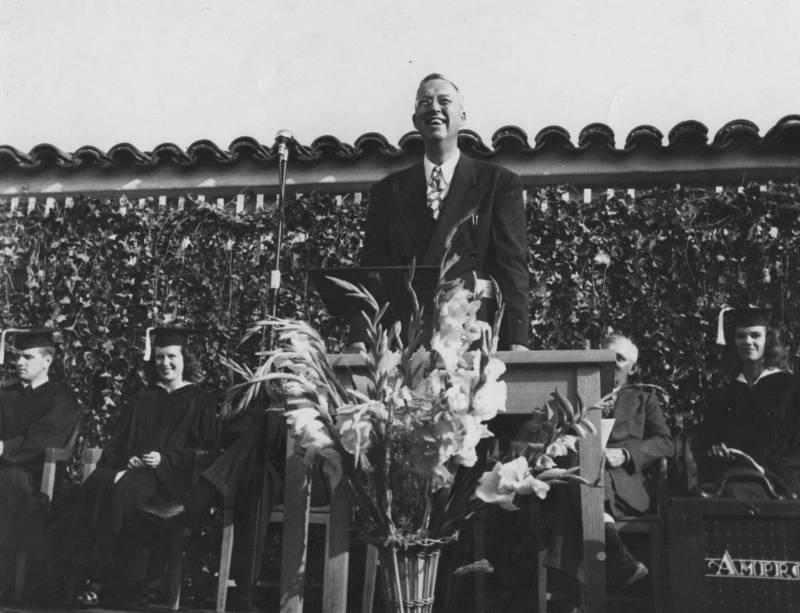Our Proud History

Since Mt. San Antonio College was established in 1946, it has emerged as an educational leader in the state of California. It is both an accredited institution and one of the largest and best known community colleges in the country.
Early History
Before Mt. San Antonio College came to be, the land was inhabited by Gabrielino-Tongva Indian Tribe until Spanish explorers and pioneer settlers called it home. In 1842, the site became the eastern edge of the original Rancho La Puente, a sprawling 48,000-acre ranch granted to pioneers John Rowland and William Workman by the Mexican government. For more than 100 years, the area became known for its fertile land and agriculture, with groves of citrus and walnut trees, packing houses and small farms.
World War II and Its Impact
World War II inspired dramatic changes. During the war, what we know today as the Mt. SAC campus was actually an army hospital and, later, a Navy hospital.
As World War II came to an end, local leaders anticipated the return of young students to complete their college education. In December 1945, voters from four local high school districts approved the formation of the Mt. San Antonio Community College District. Mt. SAC was initially named Eastern Los Angeles County Community College, but was later renamed after Mt. San Antonio, the snow-capped mountain (popularly known as Mt. Baldy) prominently visible in the distance above campus.
Walnut, not yet an incorporated city, consisted of very little except dirt roads, cacti, and grasslands covered in the spring with wild mustard grass. Over time, the orchards and small farms began to make way for post war housing and expanding suburbs.
The Spirit of Mt. San Antonio College
The college's first staff began their tenure on July 1, 1946 and were given a daunting task: Create a college and start classes that fall.
It was during those precious few months that the "Spirit of Mt. San Antonio College" was born. Faculty, staff and students banded together under a common vision to make it the best community college in the country. Without concern about monetary compensation, they dedicated themselves to pioneering a new college. Faculty and staff relentlessly worked day and night. Their family and friends and potential students generously donated their time. Spouses helped collect supplies. Students painted walls. Each Board of Trustee member personally helped finance the effort.
In just two months, a meager budget of $191,790 was pulled together and furniture was obtained from surplus war materials or made from apple crates and orange boxes. By August 15, 1946, student registration began for programs organized under 7 divisions and 12 departments.
Through dedication and perseverance, the campus community did the impossible. They opened for classes on September 16, 1946. Staff expected an enrollment of 600. By the end of the month, 454 men and 181 women were registered, with a final enrollment number recorded at 682.
A Tradition of Excellence
The Spirit of Mt. San Antonio College thrives to this day. The campus makes no compromises in quality. While maintaining low fees of just $46 a unit, the college continues to provide advanced academic training and state-of-the-art laboratories. The college boasts high-tech equipment and labs, but is also recognized for its unmatched water conservation and environmental sustainability efforts. Students are taught skills for global citizenship and also enjoy one-on-one support from faculty and counselors. While they seem impossible, they're made a reality by a new generation of dedicated faculty, staff and students.
Learn more
For more information about Mt. San Antonio College's history, read "Mt. San Antonio College: The First Fifty Years" or "The Vintage Years, Our Valley Before 1945." To learn more about Mt. San Antonio College today, visit the About Us and Why Mt. SAC sections of the website.

